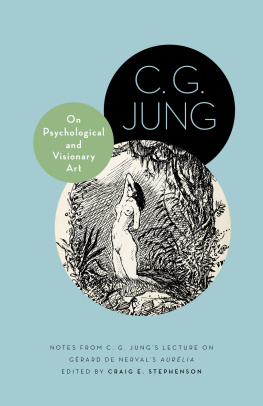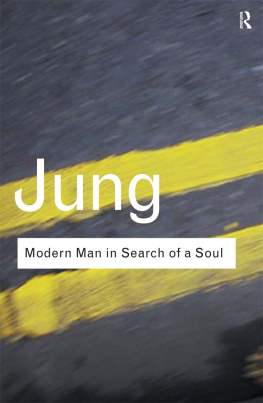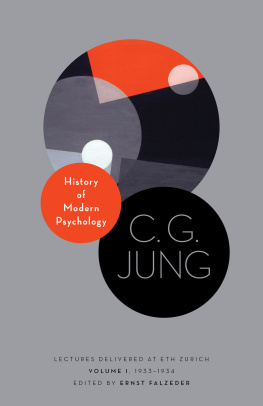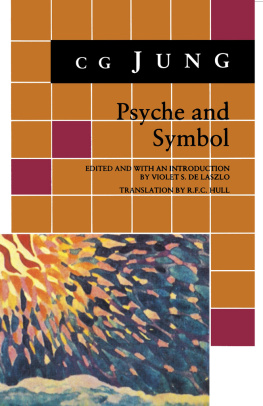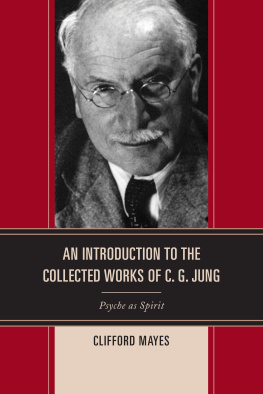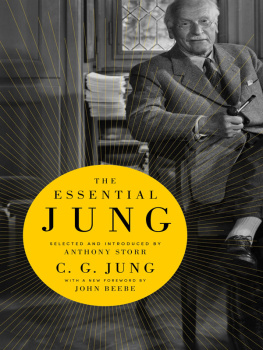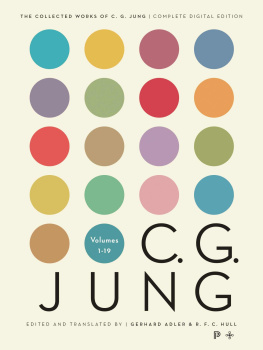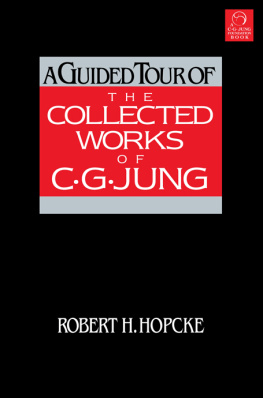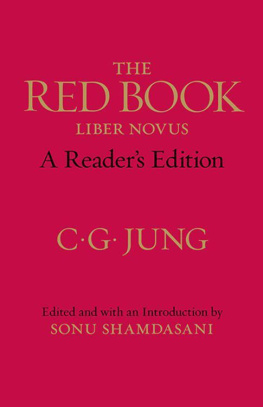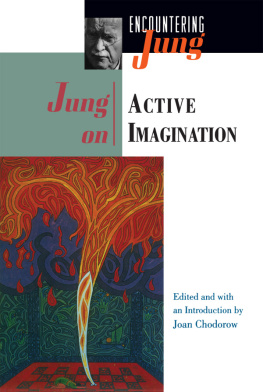ANSWER TO JOB

from
The Collected Works of C. G. Jung
VOLUME 11
BOLLINGEN SERIES XX
ANSWER TO JOB
C. G. Jung
With a new foreword by
Sonu Shamdasani
Translated by R.F.C. Hull

BOLLINGEN SERIES

COPYRIGHT 1958 BY BOLLINGEN FOUNDATION, NEW YORK, N.Y.
SECOND EDITION COPYRIGHT 1969 BY PRINCETON UNIVERSITY PRESS
FOREWORD TO THE 2010 EDITION COPYRIGHT 2011
BY SONU SHAMDASANI
PUBLISHED BY PRINCETON UNIVERSITY PRESS, 41 WILLIAM STREET, PRINCETON,
NEW JERSEY 08540
PRESS.PRINCETON.EDU
All Rights Reserved
First Princeton / Bollingen Paperback Edition, 1973
Fiftieth-Anniversary Edition, 2002
Paperback reissue, with a new foreword by Sonu Shamdasani, 2010
Extracted from Psychology and Religion: West and East, Vol. 11 of the Collected Works of C. G. Jung. All the volumes comprising the Collected Works constitute number XX in Bollingen Series, under the editorship of Herbert Read (d. 1968), Michael Fordham, and Gerhard Adler; executive editor, William McGuire.
Answer to Job, as it appeared in the first edition of Psychology and Religion: West and East, was published in a Meridian Books paperback edition (New York, 1960).
LIBRARY OF CONGRESS CONTROL NUMBER: 2010934517
ISBN: 978-0-691-15047-5
Printed on acid-free paper.
Printed in the United States of America
1 3 5 7 9 10 8 6 4 2
TABLE OF CONTENTS
FOREWORD TO THE 2010 EDITION
READING JUNG AFTER THE RED BOOK
With the publication of Liber NovusJungs Red Booka new chapter opens in the reading of Jungs works. For the first time, one is in a position to grasp the constitution of Jungs work from 1914 onward, and to trace the intimate connections between his self-experimentation and his attempts to determine the typical features of this process through his work with his patients and translate his insights into a language acceptable to a medical and scientific public. Thus, reading Liber Novus brings with it the task of rereading Jungs Collected Worksmuch of which appears in a wholly new light.
In the winter of 1913, Jung embarked on a process of self-experimentation. He deliberately gave free rein to his fantasy thinking and carefully noted what ensued. He later called this process active imagination. He wrote down these fantasies in the Black Books. These are not personal diaries, but rather the records of a self-experimentation. The dialogues that form these active imaginations can be regarded as a type of thinking in a dramatic form.
When World War I broke out, Jung considered that a number of his fantasies were precognitions of this event. This led him to compose the first draft of Liber Novus, which consisted of a transcription of the main fantasies from the Black Books, together with a layer of interpretive commentaries and lyrical elaboration. Here Jung attempted to derive general psychological principles from the fantasies, as well as to understand to what extent the events portrayed in the fantasies presented, in a symbolic form, developments that were to occur in the world.
Jung recopied the manuscript in an ornate Gothic script into a large red leather folio volume, which he illustrated with his own paintings. The overall theme of the book is how Jung regains his soul and overcomes the contemporary malaise of spiritual alienation. This is ultimately achieved by enabling the rebirth of a new image of God in his soul and developing a new worldview in the form of a psychological and theological cosmology.
Between 1916 and 1928, Jung published a number of works in which he attempted to translate some of the themes of Liber Novus into contemporary psychological language. In 1928, the sinologist Richard Wilhelm sent him a copy of the Taoist alchemical treatise The Secret of the Golden Flower, inviting him to write a commentary. Struck by the parallelism between the imagery of the text and some of his own mandalas, Jung finally decided to set aside his work on Liber Novus and not publish it. Instead he devoted himself to the cross-cultural study of the individuation process, focusing on medieval alchemy in particular, using parallels with his own material as a means to present the process in an indirect and allegorical form. Until now, this has presented formidable challenges for readers outside of Jungs inner circle.
ANSWER TO JOB
On 29 May 1951, Jung wrote to Aniela Jaff from his tower at Bollingen, I have landed the great whale; I mean Answer to Job. Shortly thereafter, Ximena Roelli wrote a letter to her mother, Cary Baynes:
[T]here is a kind of theological tract he [Jung] has been writing, called Antwort auf Hiob (answer to Job) in which C. G. says Job was right and put a lot of good questions, and Jahweh should have answered them. M-J [Marie-Jeanne Schmid] said when she typed the first version of this MS the protestant pastors in her ancestry rose in revolt, and she had a terrible time of it. Evidently it was very violent and blasphemous in tone, very negative toward Christianity. She was most upset. He has now toned it down, and she thinks before he is ready to publish it, he may do some more.
In his prefatory note, Jung wrote that he had been occupied with the central problem of the book for years. No wonder: for it was in Answer to Job that the theology first articulated in Liber Novusthe themes of the progressive incarnation of the God, the necessity for Christification, and the replacement of the one-sided Christian God image with one that encompassed evil within itfound its definitive expression and elaboration. In Jungs fantasies during World War I, a new God had been born in his soul, the God who is the son of the frogs, the son of the earth: Abraxas.
Abraxas is the God who is difficult to grasp. His power is greatest, because man does not see it. From the sun he draws the summum bonum; from the devil the infinum malum; but from Abraxas LIFE, altogether indefinite, the mother of good and evil.
Jung saw this figure as representing the uniting of the Christian God with Satan, and hence as depicting a transformation of the Western God-image:
I understood that the new God would be in the relative. If the God is absolute beauty and goodness, how should he encompass the fullness of life, which is beautiful and hateful, good
Answer to Job is faithful to the force of Jungs theophany, now presented in the form of psychotheological and historical argument. On November 25, 1953, Jung wrote to Richard Hull that the clouds of dust it has raised at times nearly suffocated me!
C. G. Jung, The Red Book, edited and introduced by Sonu Shamdasani and translated by Mark Kyburz, John Peck, and Sonu Shamdasani, Philemon Series (New York: W. W. Norton, 2009).
Gerhard Adler, ed., in collaboration with Aniela Jaff, C. G. Jung Letters, volume 2 : 19511961, trans. R.F.C. Hull, Bollingen Series (Princeton, N.J.: Princeton University Press, 1975), pp. 1718.
August 8, 1951 (Baynes papers, Contemporary Medical Archives, Wellcome Library). Marie-Jeanne Schmid was Jungs secretary. In her interview with Gene Nameche, she recalled that the blasphemous first pages were omitted (Jung biographical archive, Countway Library of Medicine, Boston, p. 55). Strikinglyin contrast to nearly all his other worksthe original manuscript is not to be found in his papers at the Swiss Federal Institute of Technology in Zurich.


